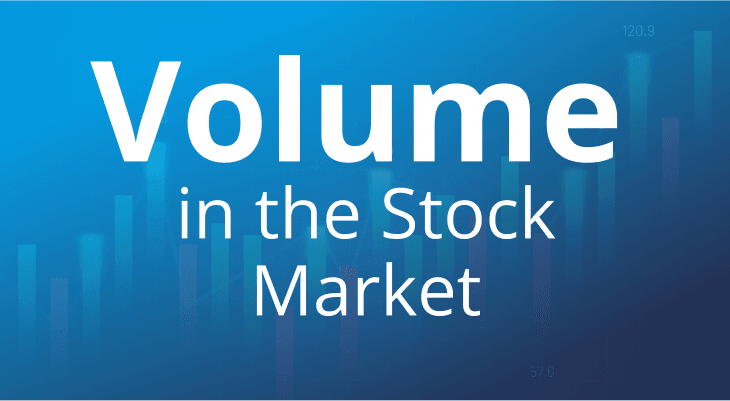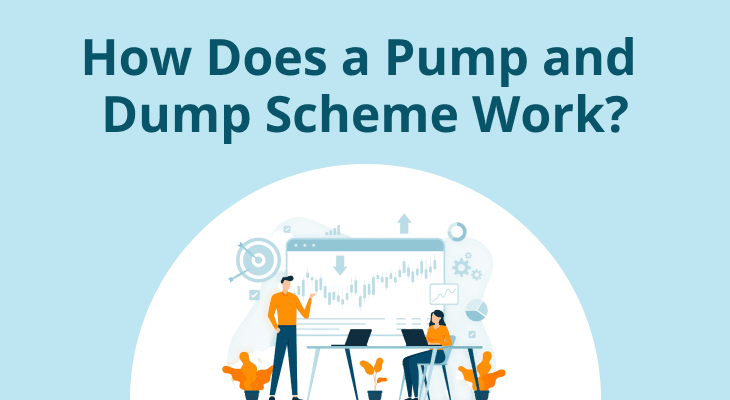
What Is a Volume in Stock Market & Its Importance
Technical analysts rely on historical trading data to forecast future price movements of stocks. One crucial metric they utilise while understanding how to use volume in trading is referring to the number of shares traded within a specific time frame. Experienced traders adeptly incorporate volume analysis into their intraday trading strategies to gauge market sentiment and potential price trends and know how to trade with volume profiles.
Volume serves as a vital indicator in technical analysis, providing insights into the strength or weakness of price movements. High trading volume often accompanies significant price changes, indicating strong market interest and potential momentum. Conversely, low volume may signal indecision or lack of conviction among traders, suggesting a potential reversal or consolidation.
Intraday traders leverage volume analysis in various ways to make informed decisions. They may look for volume spikes during specific price movements, signalling increased buying or selling pressure. Additionally, traders observe volume patterns relative to price movements to confirm trend reversals or continuation patterns.
Furthermore, volume analysis complements other technical indicators, such as moving averages or oscillators, to validate trading signals. For instance, a breakout accompanied by high volume reinforces the likelihood of a sustained price move, while a divergence between price and volume may indicate a weakening trend. This blog helps you understand how to use volume in trading, how to trade with a volume profile, and how to use volume indicators.
What is volume in stock?
In the stock market, volume refers to the number of shares or contracts traded in a particular security or market during a given period. It is a crucial metric in evaluating the activity level and liquidity of a stock. Higher volume typically indicates greater investor interest, while low volume may signal reduced interest or a lack of liquidity, making them a riskier prospect. Volume in the stock market is often tracked alongside price movements to assess the strength of a price trend. Traders often use volume to confirm trends; for instance, if a stock is rising and its trading volume increases, it can indicate strong buying interest, supporting the upward price trend.
Volume can also provide insights into potential reversals. For example, if a stock's price is falling but the volume is also low, it might suggest weak selling pressure, potentially signaling a buying opportunity. Conversely, high volume during a price decline can indicate strong selling pressure, possibly foretelling further declines.
Where can you find trading volume?
Trading volume data is widely accessible through multiple sources. Most stock market platforms, trading websites, and financial news outlets display stock volume for individual stocks, indices, and sectors. Additionally, share market volume is readily available on trading platforms and brokerage websites where users can track real-time data of high volume stocks.
Many stock trading apps or platforms also provide volume charts that show the trading volume over time, allowing traders to quickly assess trends. Platforms like m.Stock offer in-depth analysis tools and real-time data on stock volume, often with additional filters to track volume by market segment or industry type.
Volume information is crucial for traders making decisions based on technical analysis, as it provides insights into the strength or weakness of price movements. Regular monitoring of trading volume allows traders to make more informed decisions and manage risk effectively.
What Do High and Low Volumes Indicate?
High and low volumes indicate the level of trading activity and interest in a stock. Generally, high volumes suggest strong market demand and momentum, while low volumes indicate a lack of liquidity and conviction. However, the relationship between volume and price is not always straightforward. Sometimes, volume can diverge from price, signalling a potential reversal or weakness in the trend. Therefore, traders use various volume indicators to analyse the volume patterns and confirm the price movements. Some of the common volume indicators are On Balance Volume (OBV), Chaikin Money Flow (CMF), and Klinger Oscillator.
High Volume
Bullish Sign: When a stock experiences high trading volume, it often indicates strong interest from buyers. This can lead to price increases.
Bearish Sign: In some cases, exceptionally high volume during a downtrend may signal panic selling or capitulation.
Low Volume
Caution: Low volume suggests a lack of conviction among traders. It may lead to increased volatility or sideways movement.
Breakouts: Breakouts accompanied by low volume may lack sustainability.
Understanding the Relationship Between Volume and Price
Understanding the relationship between volume and price is crucial for traders and investors. Volume refers to the number of shares or contracts traded in a given period, while price represents the value of an asset at a specific time. By analysing how these two factors change together, you can gain insights into market dynamics, trend strength, and potential reversals or breakouts.
Volume Confirms Price Movements
High Volume with Price Movement: When the price moves up or down with high volume, it signals strong buying or selling pressure, confirming the trend's direction.
Low Volume with Price Movement: If price moves with low volume, it suggests weak or indecisive market participants. This can often indicate a potential reversal or consolidation.
Volume Precedes Price Movements
Volume Spikes: A sudden increase in volume before a price change can signal a shift in market sentiment and may precede a price movement in the same direction.
Price and Volume Mismatch: If volume spikes without a corresponding price change, it could indicate an accumulation or distribution phase, potentially leading to a breakout or breakdown.
Volume Diverges from Price Movements
Price Moves Without Volume: If price makes a new high or low, but volume fails to follow, it can suggest a weakening trend or reversal. This divergence indicates a lack of momentum and can point to trend exhaustion.
Tools for Volume price analysis (VPA)
There are several tools used in Volume Price Analysis (VPA), each with their own unique benefits, that can help traders assess market conditions. Let’s explore some of the most popular ones:
1. Volume Indicator:
The volume indicator shows the amount of volume traded over a specified period. It is typically displayed as a histogram, line, or bar chart. This tool can help you identify periods of high or low volume and spot volume spikes or drops, which are crucial for spotting trend reversals or breakouts.
2. Volume-Weighted Average Price (VWAP):
VWAP shows the average price of an asset weighted by the volume traded at each price level.
This tool can be used to measure the fair value of an asset, trend direction, and support and resistance levels. It also helps traders determine whether the price is above or below the average, indicating potential entry or exit points.
3. Accumulation/Distribution Line (ADL)
The ADL combines both price and volume to measure the flow of money into or out of an asset. It is particularly useful for confirming whether a trend is likely to continue or reverse.
4. Volume Oscillator (VO)
The Volume Oscillator compares two volume moving averages to identify whether volume is increasing or decreasing at a faster rate, helping traders spot potential trend reversals.
5. Volume Profile (VP)
The Volume Profile shows the distribution of volume at different price levels, helping traders understand price levels with significant trading activity, indicating support and resistance zones.
Usage of Volumes to Spot Momentum
Volume Spikes
Sudden spikes in volume often coincide with significant price moves. Traders can watch for these spikes to identify potential trends.
Climax Volume
Extremely high volume near a price peak or trough may indicate an impending reversal.
Some Common Volume Indicators
On Balance Volume (OBV)
OBV tracks cumulative volume based on price changes. Rising OBV suggests buying pressure, while falling OBV indicates selling pressure.
Chaikin Money Flow (CMF)
CMF combines price and volume to assess money flow. Positive CMF values indicate buying pressure.
Klinger Oscillator
The Klinger Oscillator measures the difference between two moving averages of volume. It helps identify trend strength.
Key Takeaways
Volume Matters
Pay attention to volume patterns alongside price movements.
Context Matters
Compare current volume to historical averages.
Divergence Matters
Look for discrepancies between price and volume.
Conclusion
In trading, volume provides valuable insights into market dynamics. By understanding volume patterns and using relevant indicators, traders can make informed decisions. Remember that volume alone is not a guarantee of success; it should be used in conjunction with other technical and fundamental analysis tools.
FAQ
How is Trading Volume Calculated?
Trading volume is calculated by counting the number of shares or contracts traded within a specific time period. It includes both buy and sell transactions and is typically reported on a daily basis. Volume data helps investors gauge the activity level and liquidity of a particular stock.
What is a Good Volume in the Stock Market?
A good trading volume generally refers to higher-than-average volume, indicating strong market interest and liquidity. Stocks with higher volume are easier to trade and show better price movement potential. The ideal volume varies depending on the stock’s size, industry, and market conditions, but consistency is key.
Does Trading Volume Affect Stock Price?
Yes, trading volume can affect stock price. High volume often indicates strong buying or selling interest, which can drive the price up or down. Conversely, low volume may signal indecision or weak market participation, leading to less price movement. Volume helps confirm price trends and potential reversals.


